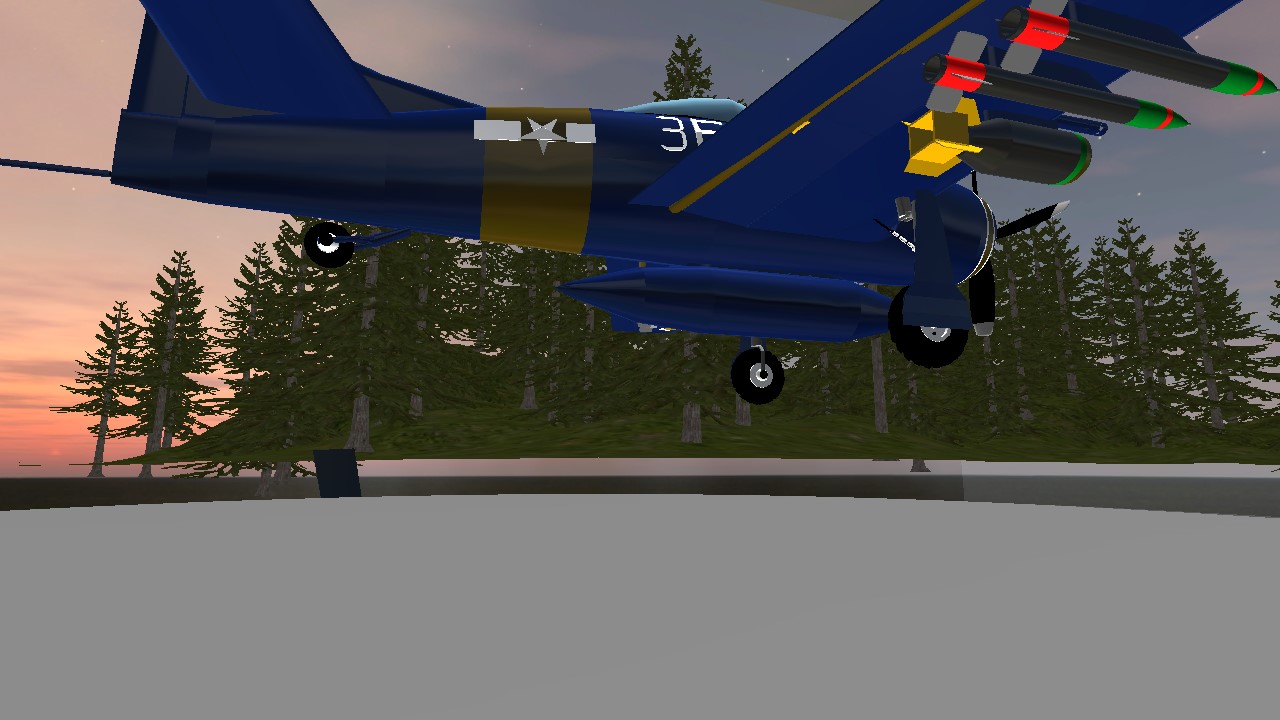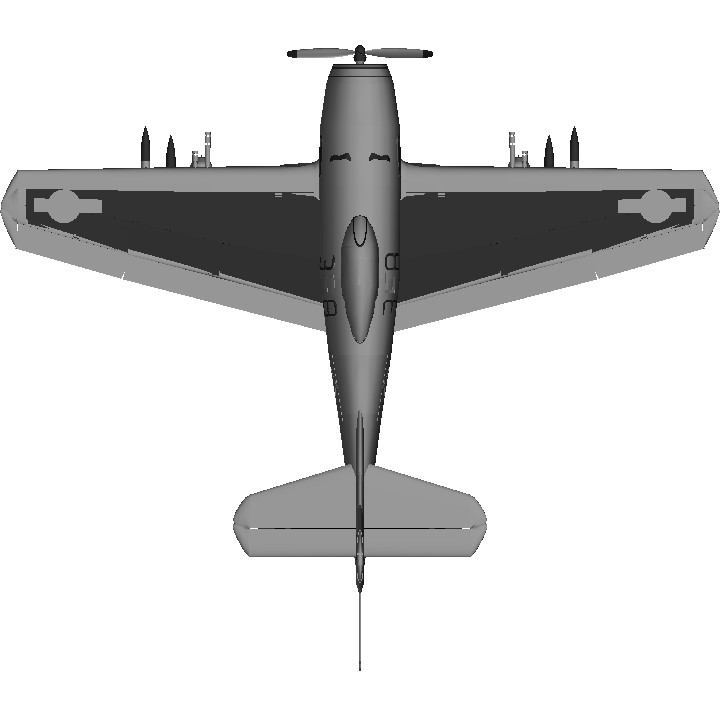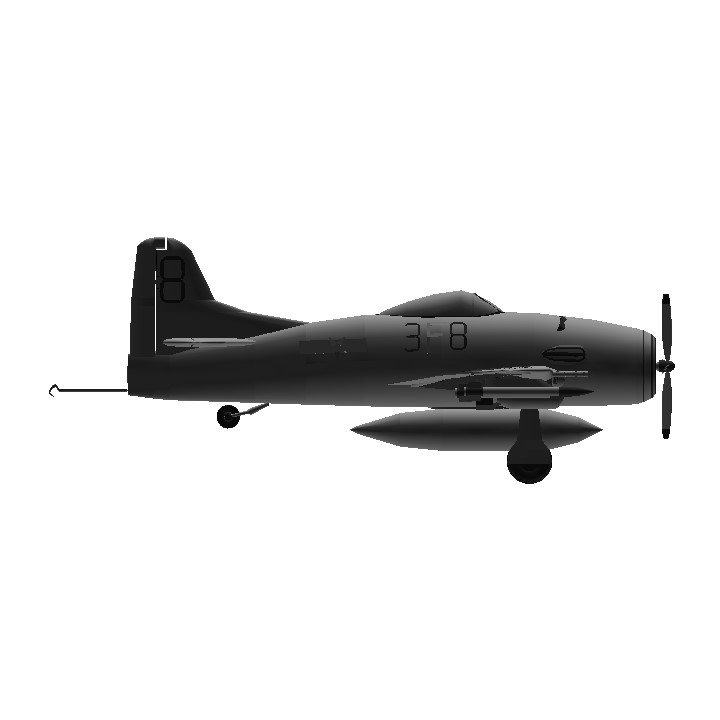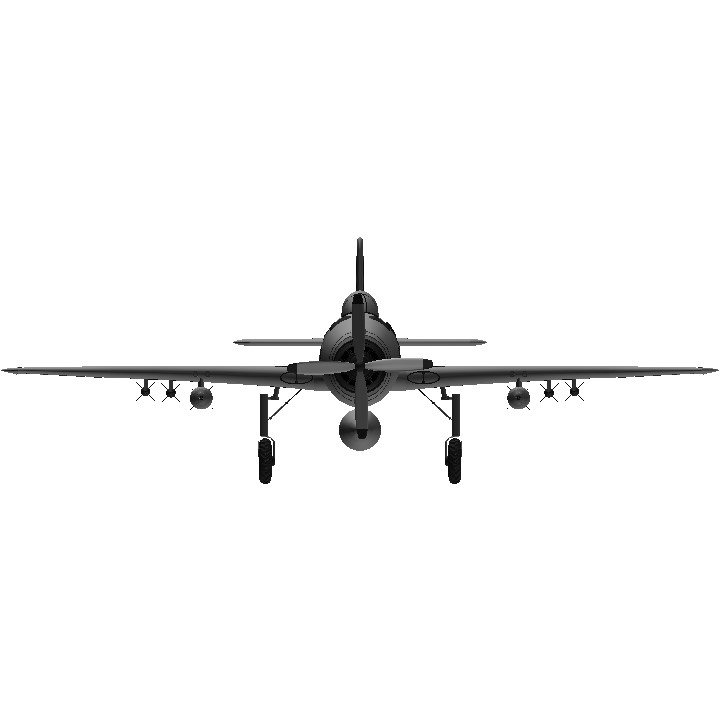I completed it, corrected some problems and added emblems.
Read the instructions in the previous version of the aircraft.
But here's a bit of history.
The Grumman F8F Bearcat is an American single-engine carrier-based fighter aircraft introduced in late World War II. It served during the mid-20th century in the United States Navy, the United States Marine Corps, and the air forces of other nations. It was Grumman Aircraft's last piston engined fighter aircraft. Modified versions have broken speed records for piston-engined aircraft, and are popular among warbird owners and air racers
The F8F prototypes were ordered in November 1943 and first flew on 21 August 1944, a mere nine months later.[b] The first production aircraft was delivered in February 1945 and the first squadron, Fighter Squadron 19 (VF-19), was operational by 21 May 1945, but World War II was over before the aircraft saw combat service.
One problem that became evident in service was the snap-off wingtips not working as expected. While they worked well under carefully controlled conditions in flight and on the ground, in the field, where aircraft were repetitively stressed by landing on carriers and since the wings were slightly less carefully made in the factories, there was a possibility that only one wingtip would break away with the possibility of the aircraft crashing.[13] This was replaced with an explosives system to blow the wingtips off together, which also worked well, but this ended when a ground technician died due to an accidental triggering. In the end, the wings were reinforced and the aircraft limited to 7.5 g.
Postwar, the F8F became a major U.S. Navy and U.S. Marine Corps fighter, equipping 24 fighter squadrons in the Navy and a smaller number in the Marines. Often mentioned as one of the best-handling piston-engine fighters ever built, its performance was sufficient to outperform many early jets.[c] Its capability for aerobatic performance is illustrated by its selection as the second demonstration aircraft for the navy's elite Blue Angels flight demonstration squadron in 1946, replacing the Grumman F6F Hellcat.[15] The Blue Angels flew the Bearcat until the team was temporarily disbanded in 1950 during the Korean War and pressed into operational combat service. The F9F Panther and McDonnell F2H Banshee largely replaced the Bearcat as their performance and other advantages eclipsed piston-engine fighters.

Specifications
Spotlights
General Characteristics
- Predecessor Grumman F-8F-1B Bearcat
- Created On Android
- Wingspan 34.9ft (10.6m)
- Length 30.2ft (9.2m)
- Height 11.9ft (3.6m)
- Empty Weight 11,631lbs (5,276kg)
- Loaded Weight 14,863lbs (6,742kg)
Performance
- Horse Power/Weight Ratio 0.706
- Wing Loading 19.8lbs/ft2 (96.8kg/m2)
- Wing Area 749.6ft2 (69.6m2)
- Drag Points 7642
Parts
- Number of Parts 354
- Control Surfaces 8
- Performance Cost 1,374







Thank you, soon I will load on the site the already built aircrafts that are to be completed and tested.@Phoza
@MrKoT no problemo
@grizzlitn
@Avro683Lancaster
@ F104Deathtrap
@F4f879
Thank you
@CRJ900Pilot maybe, but it depends on which side to look, but you're right, I just now saw it.
All the stars are upside down
Thank you @PalCoInc
Thank you @SledDriver
Thank you for your support @ThePilotDude
@Razor3278 Thank you for your support
@MrKoT you're welcome, this is a great build!
Thank you @Razor3278 , @kaaraabiner
@MrKoT welcome m8
thank you I try @Maxwell1
Real cool
@kaaraabiner thank you to Upvote
@ProcessedPlAnEs thank you
@jamesPLANESii @BogdanX thank you
@FastDan Thank you very much for your support
I love it,I wouldn't be suprised if I saw this on the front page.
@zaiher thank you